Blog / WHAT DO I ADMIRE IN SOUTH KOREA?
Hello dear intercultural Reader!
With the article of “What I admire in South Korea” I am starting a series of articles presenting branding of countries and cities and how they build their soft power. This subject is my professional interest and area of expertise that I am teaching international students at Collegium Civitas in Warsaw, Poland. All my information are evidenced based that means they are backed by facts and supported by photos made by me when visiting presented countries and cities. In this post I will share what I admire in South Korea – the first hand impression and photos are from September 2019.
Enjoy reading and experiencing the beauty of the country.
Wioletta Małota
WHAT DO I ADMIRE IN SOUTH KOREA?
PARKS AND NATURE
When choosing a travel destination it is important for me to be in a place, which combines two aspects; beautiful nature and outstanding architecture, and society which is interesting to be observed and to immersed in it for different reasons. I like walking in the parks and botanical gardens and in streets experiencing public space – building and arrangement of public sphere like squares and art in form of murals or sculptures. South Korea is a perfect match of my requirements.
In this post I am writing about the nature in Korean, in next to post I will write about art in South Korea – architecture and sculpture.
STREETS AND SQUARES
Regarding taking care of nature you may gain first delight (I did) when entering the country at the Incheon Airport. At the space between the runways lawns are laid. I admire the way Koreans arranged the public space in cities – with a lot of green, and trees along the streets and between buildings. In Seoul, capital city even small squares are harmoniously arranged with trees creating an atmosphere of Buddhists garden (photo no. 1,2, 3). The Buddhist temples in Seoul are surrounded by a extended garden of lotus flowers (photo no. 4).
Photo no. 1. Green square in the business-governmental area in Jongno-no
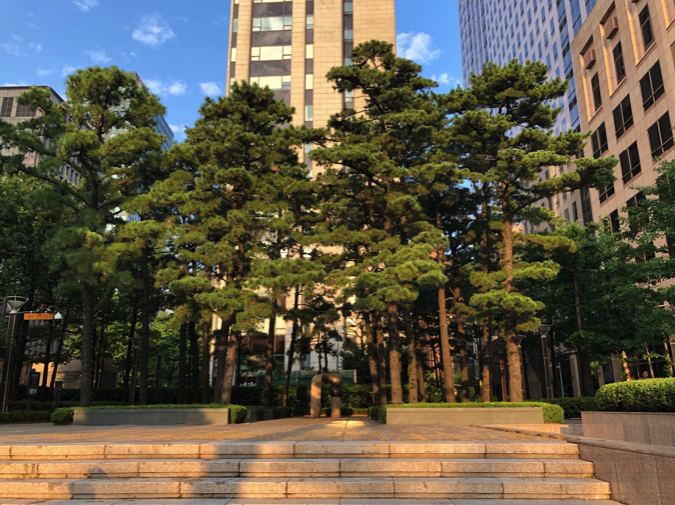
Photo no. 2. National Museum in Seoul
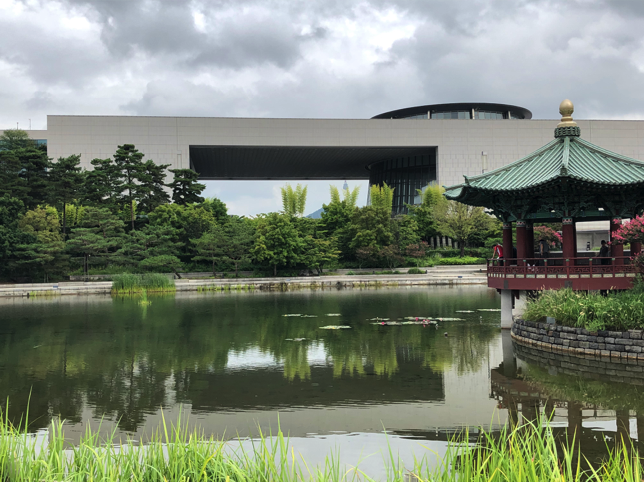
Photo no. 3 . Green square in the business-governmental area in Jongno-no
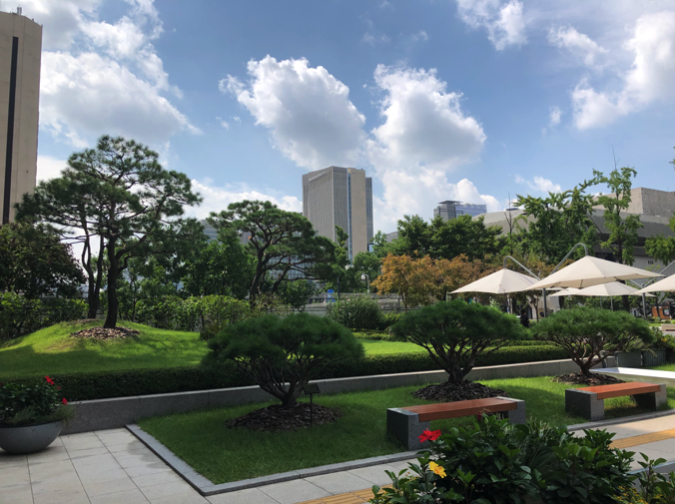
Photo no. 4. Buddhist Joyesa temple in Seoul

All these places are available to the public. I admire the care of Koreans to make available so many trees in public space taking into account that they are exposed to many typhoons. That is why in many cases the trees get extra support.
PARKS AND RECREATION AREAS
Let us take Seoul as an example – the city has a huge number of parks and recreation areas along the river Han. There are bicycle lines, lawn where people may make a picnic (what Koreans like very much and even for one day holiday they install small tents (photo 5). Seoul is surrounded by the mountains which you can reach very easy and have a walk. This is one of the favourite ways to spend free time by Koreans.
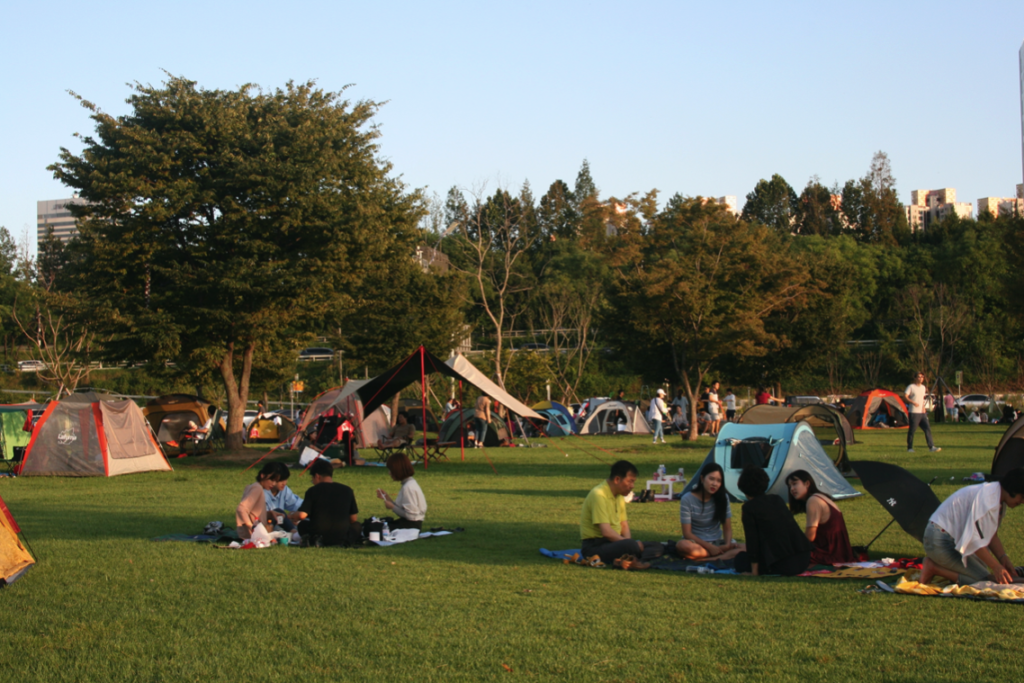
Photo no. 5. Picnic at the river Han
The second big city in Korea – Pusan offers extended walk trails along the seaside (photo no. 6) and nice arrangement of nature and sculptures (photo no. 7).
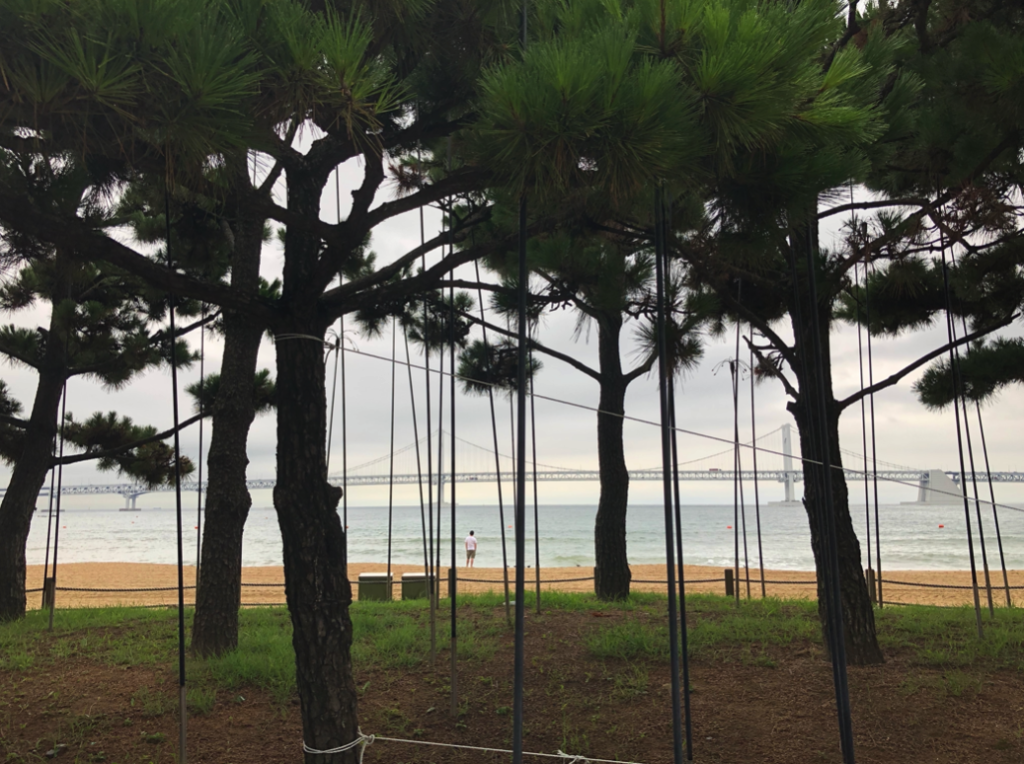
Photo no. 6. Walking trail along the beach with Diamond bridge
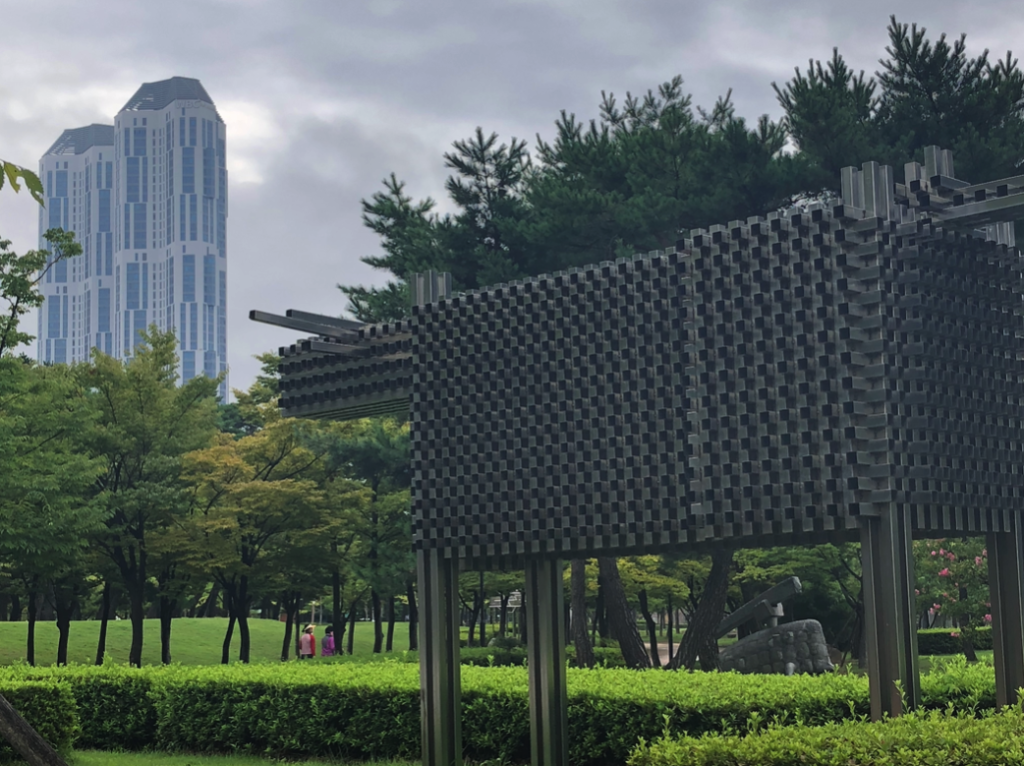
Photo no. 7. Park with sculpture – place to walk and rest
The CHILDREN’S GRAND PARK in Seoul
The Children’s Grand Park is a vast area with a zoo, botanical garden and different attractions for children. Me an adult child was amused when walking there and watching the sculptures of different creatures made from old metal parts, which is an example of good idea of recycling old things. I could not take my eyes off from these creatures (photos no. 7).
I like the idea to rent a small baby carriage. It is a fun for children as a small help for their parents (photo no. 8). This is or me an excellent example of a combination of innovation mind with pragmatism, that are two features of Koreans. I was quite surprised by the fact they a figure of the Little Prince was exhibit there (photo no. 9). This is a French (European) hero, I have never seen his posture in Poland, but in South Korea I have seen it not only in Seoul but also in Busan. This is a good and easy way to convey the culture of other countries. All these attractions in park are free what is not common case in other countries, where you have to pay to visit zoo. Seoul offers a lot of attraction for free (I will write about it in next post about art and museums).
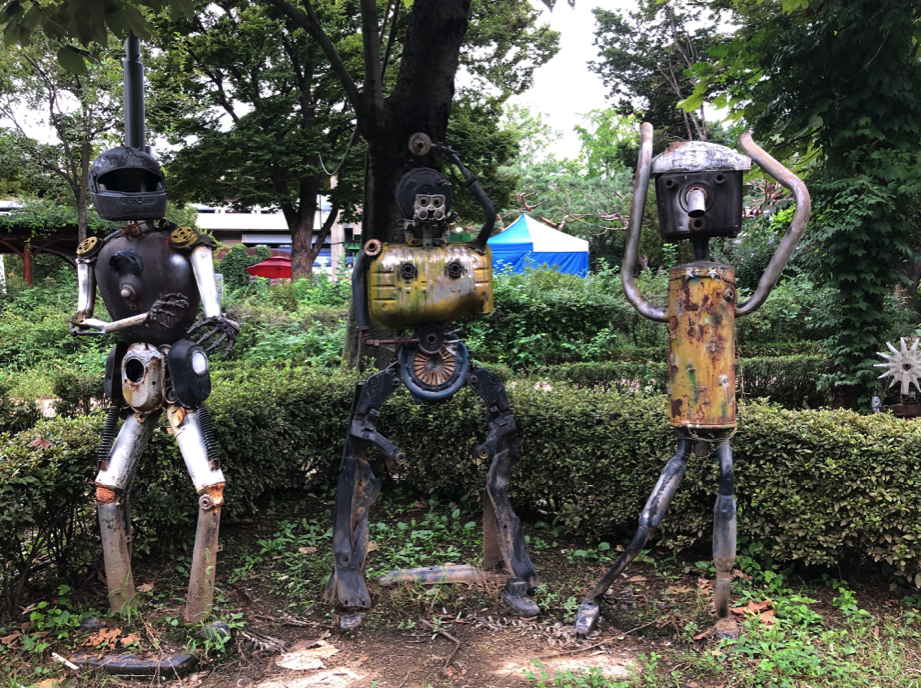
Photo no 8. Sculptures in the Children’s Grand Park
Photo no. 9. Children in baby carriage
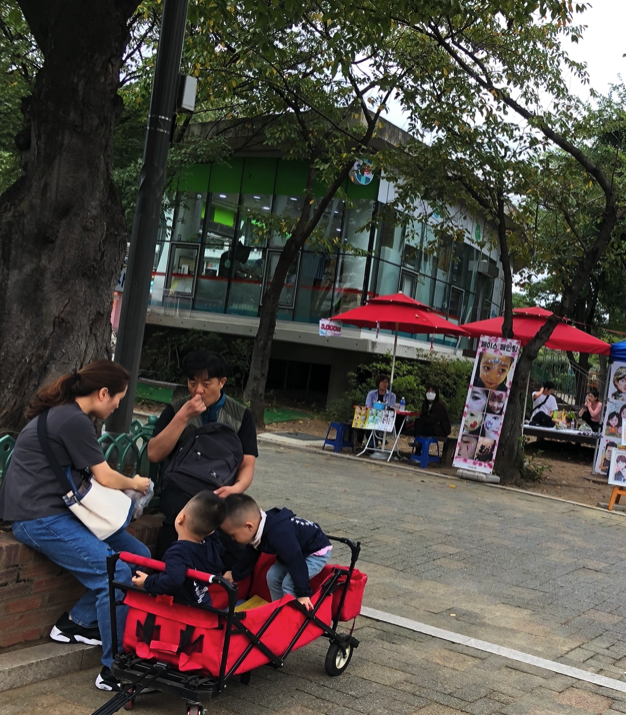
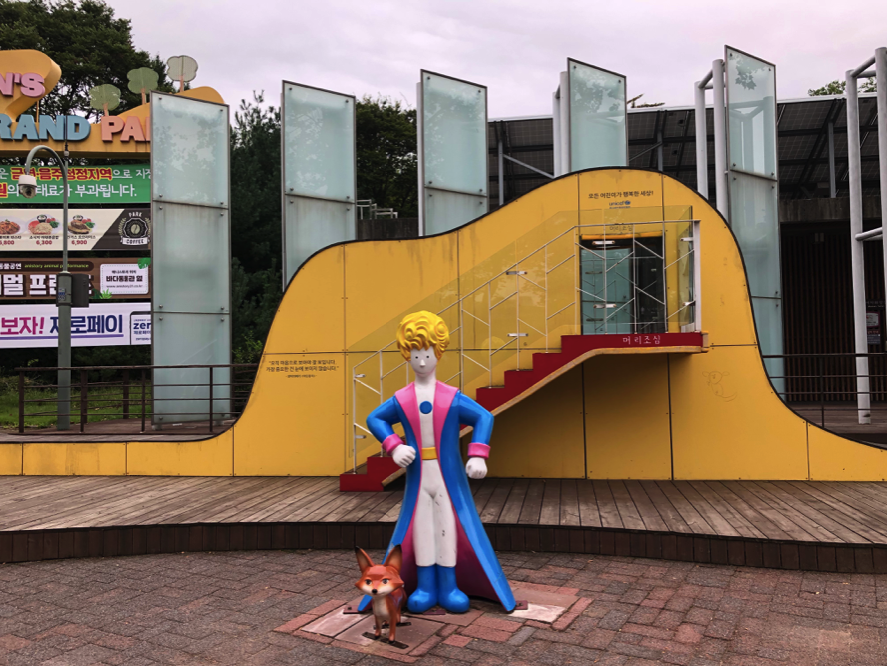
Photo no. 10. The sculpture of Little Prince at the Children’s Grand Park in Seoul
OEDO ISLAND – THE STORY OF LOVE AND PASSION TO ART
South Korea offers amazing place – an island with outstanding nature and art. The history of the park at the island is very romantic- once a wealthy Korean Mr Lee had seen the small uninhabited island and has fallen in love with it. He wanted to settle down there so he has made efforts in order to buy it from the government (It is by the way the only one island in private hand). The owner of the island has loved the parks in French style and Italian art so he has created them on it. Now the island is open to tourist to visit but only when you arrive with the ship you can stay on 1,5 hours. The art and landscape arranged there are breath taking.
Wioletta Małota
See more photos from South Korea on Photo

Photo no. 11. Artistic lighthouse at the island
Photo no. 12. Women sculpture at the idyllic landscape
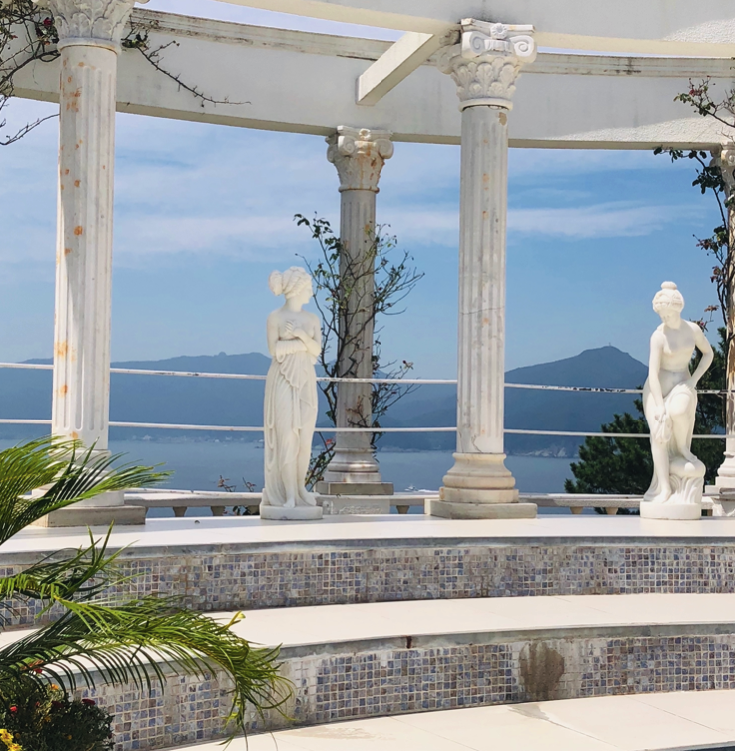
Photo no. 13. Sculpture of the joy of the family
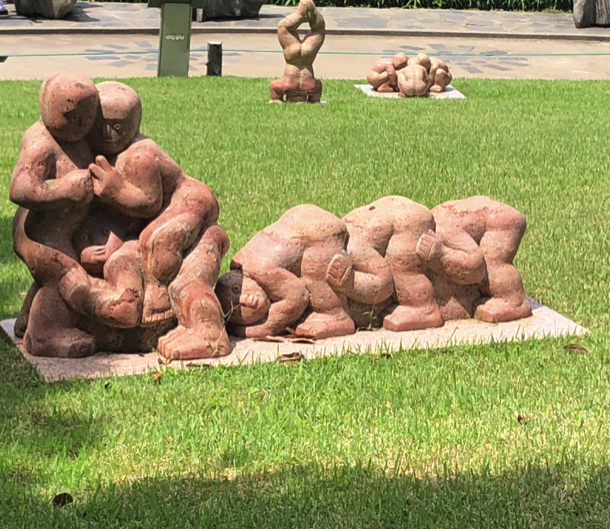
Photo no. 14. The green sculpture
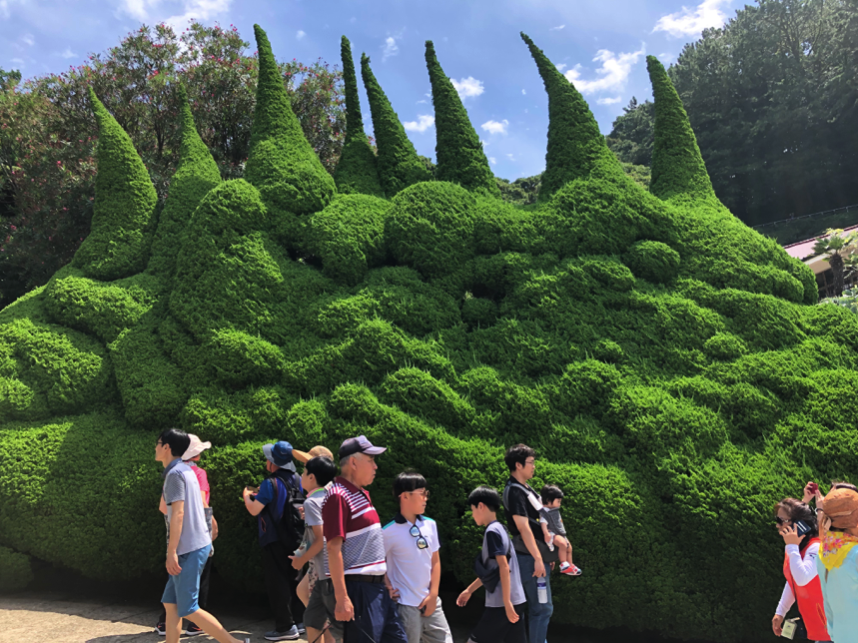
About the author
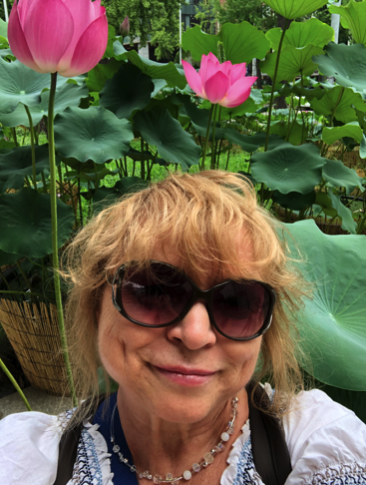
Dr Wioletta Małota is Intercultural Consultant, specializing in intercultural communication and management. She delivers workshops and individual consultancy for managers who manage business in different countries and people from different cultures.
She teaches as Visiting Professor intercultural communication, business and negotiation at international universities (Sapienza University in Rome, Sogang in Seoul, Beijing International Studies University in Beijing).
She specializes in European, Asian (Korean, Chinese, Japanese and Indian) and Anglo-Saxon cultures. The author of the book (In Polish) “South Korea. Economy. Society. K-culture” (2020, Wydawnictwo Difin). She writes a blog at www.crossculturemanagement.online.
Contact: [email protected]